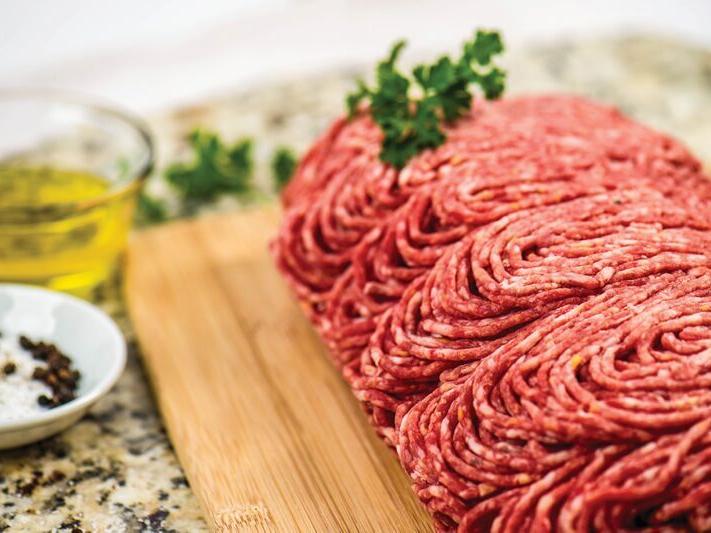
Happy cows living in sanctuaries wander, swing their tails, form strong friendships, groom each other, enjoy intellectual stimulation, prefer salty and sweet foods, empathize with each other, and take care of herd members who are sick. The vast majority of cows in the United States, meanwhile—about 41 million cows were being raised for beef and dairy in 2019—are unable to enjoy most of these activities, especially as they only live to be about 14 to 16 months old, less than a tenth of the expected lifespan of a cow living in an animal sanctuary. But how did cattle farming become like this, and what might the future hold for beef consumption in the U.S.?
The History of Meat Consumption in America
The history of eating meat in America begins with hunted meat. This predates the arrival of the settler colonialists who created a system of white supremacy, within which the story of meat-eating became primarily one of stealing American Indian land, raising cows on that land, and the consumption of domesticated meat.
In the 20th century, meat consumption has also been heavily tied to farming innovations. Innovations in industrial agriculture changed how animals were raised for the market. For example, after World War II, farmers began using antibiotics to prevent the spread of disease among animals living too close together. Cows spend their lives in cramped and unsanitary conditions where they must often endure the pain of having their tails removed.
The resulting efficiency of the meat production system also came with a price of hazardous conditions for low-wage workers. Slaughterhouses tend to hire Black, Latino, Asian, and both undocumented and documented immigrant workers for dangerous, trauma-inducing, non-unionized work. Farmers who raise cattle that are sent to slaughter also struggle to make money from their labor.
Whether eating chickens, cows, or pigs, humans became further and further removed from the individual animals they were eating—both physically and in terms of their knowledge, writes Connie Johnston in Political Ecologies of Meat.
How Much Beef Does the Average American Eat?
The average American eats about 55 pounds of beef per year, based on 2019 USDA Food Availability data, a proxy for food consumption. Since the USDA began keeping statistics, the average amount of beef consumed per capita rose from 32 pounds per person in 1932 to 88.8 pounds in 1976 and has since steadily fallen.
Meat Consumption in the U.S. Over Time
Meat consumption in the U.S. has roughly mirrored the rise and fall of beef consumption in the last century, with a low of 76.9 pounds of red meat per person in 1935 rising to a high of 136.1 pounds in 1971. From 1971 to 2019 Americans reduced their red meat intake to about 105.2 pounds per person.
The graph below shows the per capita consumption of beef and red meat in the U.S. from 2009 to 2019, using data from the USDA.
In 2019, beef comprised more than half of all red meat consumption in the U.S.
Which U.S. State Consumes the Most Beef?
While the USDA calculates beef consumption per capita nationally, it does not hold such data by state. Among the five states that the U.S. Bureau of Labor Statistics tracks, Texans spent the most on beef products, and more than the average U.S. resident. Hamburger consumption in Nevada has been found to be higher than in most other states. Meanwhile, among cities with the highest consumption of meat in the U.S., Philadelphia has been ranked first.
Which Country Consumes the Most Beef?
Argentina outpaces all other countries in beef and veal consumption per person, at 36.9 kilograms (81.4 pounds) annually, compared to the U.S.’s second-place consumption rate of 26.1 kilograms (57.5 pounds).
Why Do Americans Eat So Much Beef?
The domestication of animals for meat arrived in what is now the U.S. with settler colonialism and is directly linked to the displacement and genocide of Indigenous populations, and the decimation of bison. Meat-eating in Europe had been reserved for wealthy people. Colonists brought cows, pigs, chickens, and other livestock from Europe to raise on land stolen from `Indigenous people. As it became more accessible and affordable to more and more settlers, beef became a staple of the American diet.
Since the 19th century, meat production in the U.S. has become increasingly industrialized, resulting in factory farms that produce fast-growing cows who live in crowded and restricted spaces. Cows are fed corn, soy, and grains and are given hormones that cause them to grow quickly. From those farms, slaughterers and processors turn the cows into different forms of meat which are prepared and packaged for grocery retail and food service—from ground beef to steaks: dried, frozen, canned and chilled.
Is Beef Consumption Increasing or Decreasing?
Since the late 1970s, beef consumption in the U.S. has declined, in part due to consumer concerns about the health impacts of eating too much red meat. Instead, Americans are eating the more affordable chicken.
Beef Consumption After the Pandemic
As COVID-19 spread—and killed at least 20 workers from meatpacking plants in the Spring of 2020 before ultimately causing the deaths of a further 600,000 people in the U.S.—beef consumption seems to have fallen to 13.2 billion pounds nationally, down from 13.9 billion in 2019. People also began purchasing more of their beef from the grocery store than from restaurants and other food service venues.
How Much Beef Is Wasted in the U.S.?
About one-third of food is wasted in the U.S., and meat tops the list by value. In 2010, 161.6 billion dollars’ worth of food went uneaten, of which about 30 percent was meat, poultry, and fish. Vegetables (19 percent) and dairy products (17 percent) were the other top contenders. Given the dominance of beef consumption in the meat industry, billions of pounds of beef are likely wasted in the U.S. each year.
There are many ways that beef is wasted. It can be damaged due to packaging, storage, spoilage, or may not pass food safety inspections. It can also be overstocked at stores or not be purchased because of how it looks to grocery store shoppers. At home, people may overestimate how much food they need and make too much food, or they may throw away uneaten food because of food recalls, or concerns about whether the food is expired.
What Would Happen if Everyone Ate Less Beef?
If everyone ate less beef, fewer cows would be painfully branded and bred for slaughter. Public health might also improve for us humans if we ate less meat—with fewer outbreaks from eating contaminated meat, reduced levels of obesity, longer life spans, and fewer chronic diseases like cancer, diabetes, and heart disease.
With reduced farming of cows that are given large amounts of antibiotics, leading to spreading antibiotic resistance in bacteria, people might have a better chance of surviving bacterial infections. Less corn, soy, and other feed would be raised for cows, the amount of methane and carbon dioxide pollution would be reduced, and water in rivers and throughout ecosystems would be replenished. Biodiversity might also increase as a result of reduced denuding of land for cattle grazing.
Finally, there would be a significant impact on the food system. People could sink their teeth into a falafel sandwich with greater assurance that their proteins are not directly linked to slavery, compared to if they had chosen to eat a typical cheesesteak or hamburger.
What Can You Do To Help?
Give yourself a pat on the back for taking the time to inform yourself about the consumption of dairy and beef in the U.S. Here are some additional resources as you consider how you can help solve some of the ethical, social, environmental, and political problems raised in this article:
- Food Empowerment Project’s Food Chain Newsletter offers an overview of the beef industry, from the life of the cow to the environmental and human costs.
- Factory Farming Awareness Coalition’s blog features efforts to help livestock farmers transition away from the factory farms that raise most cattle in the U.S.
- Heed the perspectives of Black and Indigenous activists seeking to decolonize the food system, as written about in this article.
Are we missing something? Let us know how we can make this article better.
The Road Ahead
The story of how beef is consumed in the U.S. often omits the experiences of cows or the people who labored to raise and slaughter them. Beef has been separated from its origins by a powerful supply system, which activists are seeking to undo because of its harms to communities, animals, and the environment.
The Link LonkJune 26, 2021 at 02:06AM
https://ift.tt/3qvXiUX
Beef Consumption in the US: Is It Increasing or Decreasing? - Sentient Media
https://ift.tt/2RxTDX4
Beef

No comments:
Post a Comment